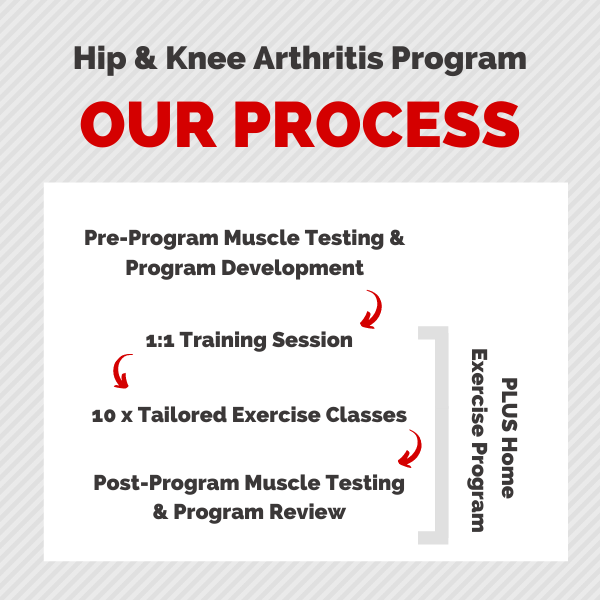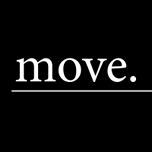Arthritis is a general name that covers a group of conditions that affect the joints of the body. Typically, arthritis causes you to feel symptoms such as stiffness and pain in the joints.
Although arthritis can cause problems with all parts of a joint (such as the capsule, ligaments, surrounding muscles, and underlying bone) it is the cartilage on the end of bones inside the joint that is typically most affected.
Cartilage is normally smooth and tough which allows bones to glide on each other during movement. It also serves as a cushion to absorb forces or loads placed on the joint.
There are different types of Arthritis, including:
- Osteoarthritis
- Rheumatoid Arthritis
- Juvenile Arthritis
- Psoriatic Arthritis
- Gout
- Polymyalgia Rheumatica
- Ankylosing Spondylitis
- Spondylarthritis
- Osteoporosis
What causes Arthritis?
Although in most cases there is not a specific cause for the development of Arthritis, there are some factors that may contribute to the onset and progression of the condition.
These risk factors can be categorised as modifiable (things you can change) or non-modifiable (things you cannot change).
Modifiable risk factors include:
- Repetitive joint-loading activities (such as kneeling, heavy lifting)
- Previous joint injury (such as a previous knee injury)
- Increased body weight
- Reduced overall physical conditioning
- Reduced muscle strength
Non-modifiable risk factors include:
- Gender: 3 in 5 people who have osteoarthritis were found to be female
- Age: More common in older age groups, however age itself does not cause arthritis
- Genetic factors
- Presence of other health conditions, such as diabetes, hypertension, or high blood pressure
What is the most common type of Arthritis?
Osteoarthritis (OA) is the most common form of arthritis in Australia. OA represented 62% of all arthritic conditions in 2017-18.
In 2017-18 approximately 2.2 million Australians reported having OA, which is 9.3% of Australia’s total population or 1 in every 11 Australian. Between 2005-06 to 2016-17 there was a 38% increase in the rate of total knee replacements for OA in Australia.
OA can affect people of all ages however was found most common among people aged 75+. The prevalence of OA increases over the age of 45 with 1 in 5 (21%) Australians found to have it.
What areas of the body are affected by Arthritis?
The most common areas of the body that are affected by Arthritis include the hands, the spine, hip, knees and ankles.
Although Arthritis is a condition that affects the joints in our body, people with this condition were also found to report poorer overall health (including both physical and emotional health) when compared to those without Arthritis. This is due to its impact on general mobility, function, and quality of life.
This highlights the importance in all cases, and not just in the management of Arthritis, that we address the whole person and not just the injury or condition.
What you may notice if you have Arthritis
Symptoms of Arthritis are usually related to the involved joint(s). These symptoms may develop gradually over time and can vary between each person.
In the early stages a person with Arthritis may experience joint stiffness especially in the morning or after prolonged sustained postures (such as sitting) that lasts a short duration and improves with mobility. In the later stages pain may be experienced during rest and at night.
Joints may become swollen, appear red and/or feel hot if an underlying inflammatory component is present, especially in the later stages.
It is important to remember, pain associated with Arthritis is not from the cartilage that covers the ends of bones in the joint but rather surrounding structures such as underlying bone, ligaments, joint capsule, tendons and muscles.
The knee, hip and hand are the most common areas of the body affected by OA and usually have specific symptoms related to those areas.
Common knee Arthritis symptoms:
- Pain over the inside and front aspect of the knee
- Stiffness and reduced knee range
- Actual or feeling of the knee ‘giving way’
- Grinding and clicking noises
- Difficulty walking up and down steps/stairs
- Difficulty standing from a seated position
- Knocked knees or bowing of the knee
Common hip Arthritis symptoms:
- Pain felt over the outside and front aspect of the hip, and deep groin area
- Pain referring to the thigh or felt over the inside aspect of the knee (but rarely below the knee)
- Difficulty with activities like gardening, getting in and out of the car or chair, and putting on socks and shoes, due to the decreased range of motion of the hip joint
- Giving way sensation over the hip area
Common hand Arthritis symptoms:
- Pain felt over the base of the thumb and ends of fingers
- Fingers may appear ‘lumpy’ or swollen and feel tender to touch
- Fingers feel stiff to move
- Difficulty gripping objects and carrying heavy objects such as shopping bags
- Difficulty weight-bearing through hands pushing up from a chair or ground
How do you manage it?
The management of Arthritis aims at reducing symptoms and improving function, however currently there is no known cure for the condition and associated cartilage loss.
Current national and international clinical guidelines recommend patient education, exercise and weight loss as first line management for Arthritis, in addition to appropriate medications depending on the type of Arthritis and its severity.
Education
Every person seeking care for the management of Arthritis should be provided some form education, to ensure you have a thorough understanding of what Arthritis is and how to best manage it.
Your physiotherapist or other health professional will be able to assist and advise what type of exercise or activity is appropriate, and what level of soreness may be expected. Considerations include the amount of discomfort you feel during an activity, symptom response (swelling and pain) over a 24-hour period after an activity and the trend of these symptoms over a period of time (such as 2-3 months).
In addition, establishing both short and long-term goals is an important first step of your management plan. These goals are usually developed during your first appointment together with the physiotherapist and should be specific to what you value most. It is important to establish what activities your Arthritis is preventing or limiting to help set these goals.
Most commonly initial goals are usually to reduce pain and improve function. Examples include being able to finish 18 holes of golf with no or minimal knee pain or to walk 5km at parkrun on Saturday mornings.
The experience of pain can be unpleasant, and can serve as a great motivator to take action to reduce its intensity (how severe it is), duration (how long it lasts), frequency (how often you experience it) and its nature (does it come and go or is it constant). It is one of the primary reasons why people seek advice and treatment from a physiotherapist or health professional.
A pain experience can be quite variable especially if you’ve had it for a long time. From pain science we know that a pain experience can be influenced by multiple factors. These may include what is happening in your tissues (such as muscles, joints, bone etc),but is also influenced by your past experiences, your current understanding of your problem, your beliefs about your problem, the environment that you are in (living, work or social environment). It is important both symptom (such as pain) and function-based goals are established when reviewing your progress during management.
Your diet and nutrition need to be considered in the management of Arthritis. Being overweight not only increases the load on your weight bearing joints, it also increases the inflammatory chemicals in your body, so reducing your body fat can have a positive effect on your symptoms.
People with Arthritis often have issues sleeping due to pain. It is important to try and establish good sleep hygiene and routine, as we also know that good quality sleep and the right quantity of sleep helps your body manage pain and long-term chronic conditions such as Arthritis.
Exercise
Being physically active is an integral part of the management of Arthritis.
Specific knee joint loading through exercise has been found to be safe for people with knee Arthritis. This is why appropriate loading through exercise has great benefits for people with Arthritis including slowing down the degeneration of cartilage and keeping the cartilage healthy.
Exercise does this by bringing nutrients to the cartilage promoting growth and regeneration maintaining its strength to withstand loads placed on the joint during day-to-day activities.
Also, exercise keeps your joints moving which maintains or improves their range of motion, and helps to build stronger muscles to make it easier to perform your daily activities such as walking up and down steps/stairs, driving, getting in and out of the car, and putting on your socks and shoes.
You should seek guidance from a health professional, such as a physiotherapist, to help guide you on what exercises will be appropriate for you.
Weight Loss
It is important to consider weight management (if required). Weight loss can improve symptoms of Arthritis and function by reducing overall load on your joints, and inflammatory markers which may also lead to reduced pain.
Other Forms of Management
- Pain relief and specific Arthiritis medications which are usually managed by your GP or a Rheumatologist.
- Hands-on treatment from your physiotherapist or other health professionals, which may include taping and soft tissue joint mobilisations to support your exercise or active management plan.
- Surgery (such as arthroscopy and joint replacements) should only be considered following a comprehensive conservative management period (usually 6-12 months) or when no other treatment has worked using other forms of management. Only approximately 10-15% of people with OA usually need surgery.
Management Options at Move for Better Health
At Move for Better Health’s Unley Road (Malvern) and Magill Road (Magill) clinics in Adelaide, we provide an evidence based arthritis program, which combines our own extensive experience in the management of arthritis, with the most current research from around the world.
The program includes thorough & specific strength testing, advice on how to manage the condition, and most importantly, a series of strengthening exercises under Physio supervision, which are shown to be beneficial for hip and knee arthritis. We then re-do the strength testing at the end of the program, so your Physio can objectively review your progress and make further recommendations.
The exercise component of our program is run in our Equipment Studio, which contains a range of exercise equipment and weights.
Managing knee and hip arthritis in this way has been shown to reduce the need for surgery, in particular, arthroscopies and joint replacements. After completing a program like this, patients have generally reported improved pain, better strength and improved quality of life.
Read more about our Hip & Knee Arthritis Program here, which you can start at any time.





